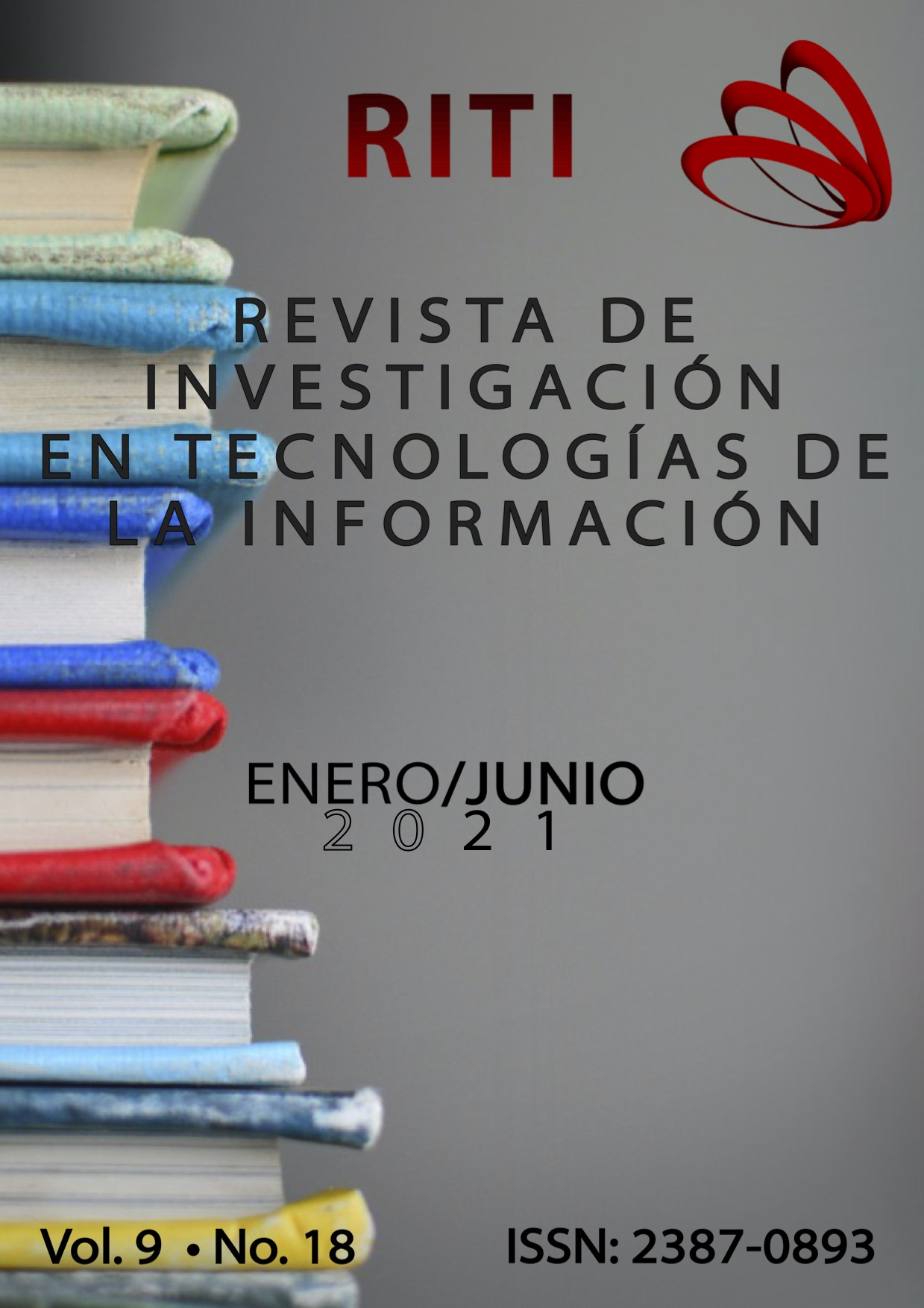Squeaky bracelet double alarm prototype for possible kidnapping and loss of infants in a place that crowds people
DOI:
https://doi.org/10.36825/RITI.09.18.005Keywords:
Alarm, Bluetooth, Prototype, Kidnappings, Squeaky BraceletsAbstract
The search to reduce the disappearance of infants has been the main objective of many public officials and institutions, however, the result has not been satisfactory yet. Our country is considered one of the most dangerous regarding citizen insecurity; The state of Puebla ranks third in the nation in terms of missing minors, in Huauchinango there are at least 50 missing so far in 2020, half of whom are minors. This work shows the design and development of a double alarm prototype for possible kidnappings and loss of infants in a place that agglomerates people focused on the Huauchinango region, with the main objective of helping to reduce the theft of infants, kidnapping or loss, following a simple and straightforward process method using two devices, emitter and receiver. The process is between two Squeaky bracelets which are linked to each other, they will have indicator lights when the link is in the programmed range (green indicator), if it is outside the range the red light will be activated and it will emit a sound, to give notice of possible distancing between devices. The project is not only for the reach of infants, but to the entire public.
References
Padgett, H. (2011). Jauría: la verdadera historia del secuestro en México (1era Ed.). México, D.F: Grijalbo.
Morris, A. D. (1986). The origins of the civil rights movement. Simon and Schuster. New York, USA: Free Press.
Moncayo Balseca, D. E. (2019). Desarrollo de una aplicación móvil para el apoyo a la búsqueda de personas desaparecidas en el Distrito Metropolitano de Quito. Recuperado de: https://bibdigital.epn.edu.ec/bitstream/15000/20050/1/CD-9478.pdf
Mi Patente. (2019). ¡Crean estudiantes plantilla antisecuestro! Recuperado de: https://www.mipatente.com/crean-estudiantes-plantilla-antisecuestro/
Sánchez, F. (2017). Diseña ITES app para emitir alertas de riesgo personal. Recuperado de: https://www.mipatente.com/disena-itesm-app-para-emitir-alertas-de-riesgo-personal/
Torres Mejía, C. E. (2018). Estudio y desarrollo de un sistema GPS móvil para el cuidado de menores de edad y centros de educación (Tesis de Grado). Universidad Católica de Santiago de Guayaquil, Ecuador. Recuperado de: http://192.188.52.94:8080/bitstream/3317/10217/1/T-UCSG-PRE-TEC-ITEL-267.pdf
Staff High Tech Editores. (2017). Emerapp una aplicación antisecuestros para smartphone. Recuperado de: https://www.infochannel.info/mexicanos-ganan-tercer-lugar-por-app-anti-secuestros
Benites Solís, E. E. (2014). Desarrollo e implementación de un dispositivo de navegación y sistema de ruteo con la utilización de un gps paralax y un microchip pic 16F628A, aplicado para la ubicación de transporte y personas en zonas del país (Tesis de Grado). Universidad Politécnica Salesiana, Sede Guayaquil, Ecuador. Recuperado de: https://dspace.ups.edu.ec/bitstream/123456789/10398/1/UPS-GT001438.pdf
Sairam, K. V. S. S. S. S., Gunasekaran, N., Redd, S. R. (2002). Bluetooth in wireless communication. IEEE Communications Magazine, 40 (6), 90-96. doi: https://doi.org/10.1109/MCOM.2002.1007414
Marín, E. (2008). Escuchando la luz: breve historia y aplicaciones del efecto fotoacústico. Latin-American Journal of Physics Education, 2 (2), 209-215. Recuperado de: http://www.lajpe.org/may08/17_Marin.pdf
Acevedo Duran, V. J., García Sandoval, A., Sandino Ariza, J. S. (2004). Sistema de registro y control de salida de elementos mediante dispositivos rfid (Tesis de Grado). Pontificia Universidad Javeriana, Bogotá. Recuperado de: https://repository.javeriana.edu.co/bitstream/handle/10554/7561/tesis10.pdf?sequence=1&isAllowed=y
Published
How to Cite
Issue
Section
License
Copyright (c) 2021 Revista de Investigación en Tecnologías de la Información

This work is licensed under a Creative Commons Attribution-NonCommercial-NoDerivatives 4.0 International License.
Esta revista proporciona un acceso abierto a su contenido, basado en el principio de que ofrecer al público un acceso libre a las investigaciones ayuda a un mayor intercambio global del conocimiento.
El texto publicado en la Revista de Investigación en Tecnologías de la Información (RITI) se distribuye bajo la licencia Creative Commons (CC BY-NC
 ), que permite a terceros utilizar lo publicado citando a los autores del trabajo y a RITI, pero sin hacer uso del material con propósitos comerciales.
), que permite a terceros utilizar lo publicado citando a los autores del trabajo y a RITI, pero sin hacer uso del material con propósitos comerciales.



